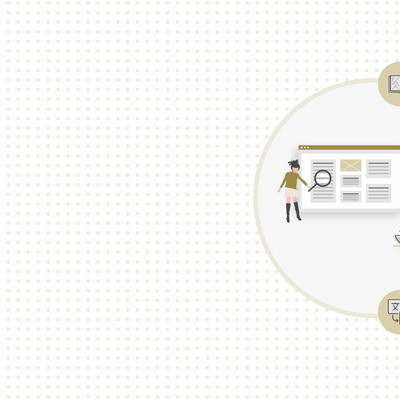Online on the move without obstacles?
Lifts at subway stations, extra-large parking spaces at supermarkets and Braille in museums: in everyday life, increasing attention is being paid to making it easier for people with disabilities to get around. Unfortunately, things are often different in the digital world! Using the internet is associated with many hurdles for this group of people and too little thought is given to their needs.
State requirements for digital accessibility
In the meantime, the state is also taking the digitalization of accessibility very seriously. The Accessibility Improvement Act was passed in summer 2021. What does this mean in concrete terms?
So far, only public authorities or state-funded website operators have to make their websites accessible. This is set to change from June 28, 2025! Online stores and e-books will then also have to be accessible. You can find more information on the legal requirements in our blog post "WCAG vs. BITV - What are the requirements?".
Diese Dienstleistungen müssen ab 2025 barrierefrei sein
- Telefon- und Messenger-Dienste
- Bankdienstleistungen
- Elektronischer Geschäftsverkehr, z.B. Onlineshops
- Apps und mobile Dienste für den Personenverkehr
- Personenbeförderungsdienste (teilweise regional eingeschränkt)
Diese Geräte sind ab 2025 betroffen
- Computer, Notebooks, Tablets, Smartphones (inkl. Betriebssysteme)
- Smart-TVs mit Internetzugang
- E-Book-Lesegeräte
- Router
5 reasons for an accessible website
- Reach more customers
- Be a role model
- Promote digital participation
- Satisfy customers
- comply with legal requirements
As already mentioned, 13 million people in Germany are physically or mentally impaired - by no means a marginalized group! By making your digital offering accessible to this group, you will ultimately reach more customers and make it possible for them to cope with everyday digital life.
Adapted content not only satisfies the new customer group, but also fulfills legal requirements that are becoming increasingly strict and specific.
Guideline zur barrierefreien Content-Pflege
Jetzt kostenlos downloaden und wertvolle Insights erhalten!
We provide you with comprehensive information
We have compiled the most important information about digital accessibility for you on this page. There is not just one group of people with disabilities. Visually impaired people have different needs than deaf people. We show you which different groups there are. We also offer you further information on the topics of accessible design and accessibility on social media.
If you would prefer to find out more about the topic in a compact format, we recommend our webinar on digital accessibility. There, our expert group will give you a rough insight into the various areas.













